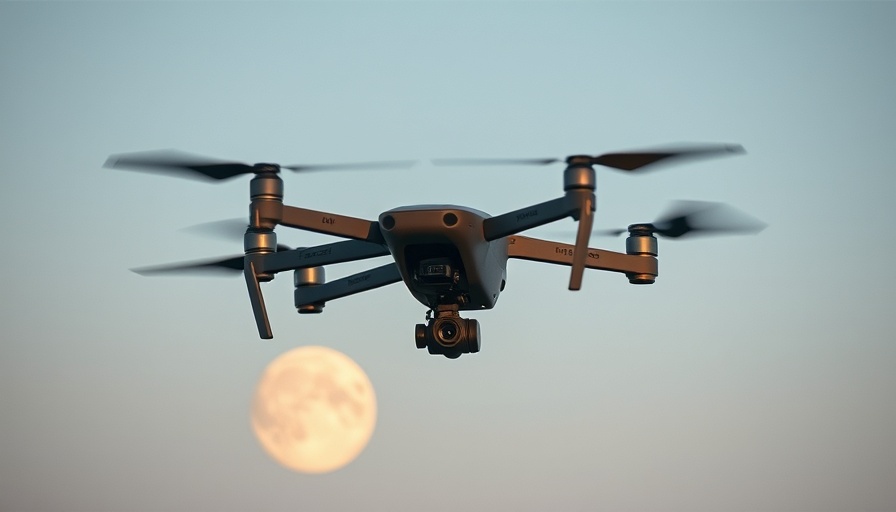
The Future of Drone Technology in Military Operations
In a significant leap for military technology, U.S. forces have showcased the capabilities of modern drones working in unison to track real-time targets. This evolution from traditional, single-drone operations to collaborative, multi-drone systems is driven by advanced AI software, significantly reducing the cognitive load on operators. With developments like Palladyne AI's Pilot AI running on Teal drones, a single operator can now manage multiple drones, allowing for a more efficient and powerful operational framework that enhances situational awareness.
Understanding Multi-Sensor Data Fusion
This remarkable demonstration highlights a key technical advancement known as multi-sensor data fusion. Drones equipped with various sensors such as cameras, thermal imaging, and radio-frequency detectors work together to create a comprehensive view of a target area. This technology ensures that if a target goes out of camera view, the drones can still track it using alternative signals, such as radio emissions. This capability makes them more versatile and difficult for adversaries to evade.
The Growing Military Implications of Drone Swarms
The military implications of drone advancements cannot be overstated. As seen in conflicts like the Ukraine war, various actors are harnessing the power of drones, thus shifting the balance of military technology. Reports indicate that cheaper drones can challenge larger and more costly military assets, like aircraft carriers. The Pentagon is acutely aware of this shifting dynamic and is investing heavily in AI-driven coordinated drone systems to counter burgeoning drone swarm threats.
Real-World Comparisons: Lessons from Global Conflicts
Insights from global conflicts reinforce the importance of using drone swarms in modern warfare. A study highlighted by retired military officials suggests that the era of expensive, large-scale weapon systems is ending. Affordable drones operated in swarms can provide significant tactical advantages, posing a threat even to the most sophisticated military fleets. The sheer number of operable drones on the battlefield creates an overwhelming scenario for traditional defense strategies.
What's Next for U.S. Drone Technology?
Looking ahead, drone technology is set to undergo further transformation. Companies like Red Cat and Palladyne are at the forefront of this change, continuously developing capabilities that could redefine modern warfare. The shift to drone swarms and multi-sensor integration may soon become standard practice, not just for U.S. forces but for militaries worldwide.
As the evolution of drones unfolds, understanding their implications for national security, technology, and strategy will be crucial. The melding of advanced AI, real-time data fusion, and collaborative drones marks both an opportunity and a challenge for global military dynamics. Staying informed about these advancements can provide insights into the implications for defense and strategic planning.
 Add Row
Add Row  Add
Add 




Write A Comment